What is Positive Reinforcement? – Croney Research Group
Positive reinforcement is a training method where you acknowledge and reward good behaviors. Simply put, it means giving your dogs something they want when they do something you like!
Positive reinforcement training is recommended by behavior experts because it is effective AND humane!
Positive reinforcement can be used to train new skills, and can also be used to change or stop unwanted behaviors.
Positive reinforcement makes your dog more likely to do rewarded behaviors in the future.
To make training effective, give rewards right after the desired behavior happens. This helps your dog make the connection between their behavior and a positive outcome!
Marking behavior: Some trainers use a clicker for training. You can also use a verbal response, such as saying “YES!”
When your dog does the desired behavior, you click, and then deliver the treat. Think of it as taking a “snapshot” of the behavior you are rewarding. This helps your dog better understand exactly which behavior you are “paying” them for.
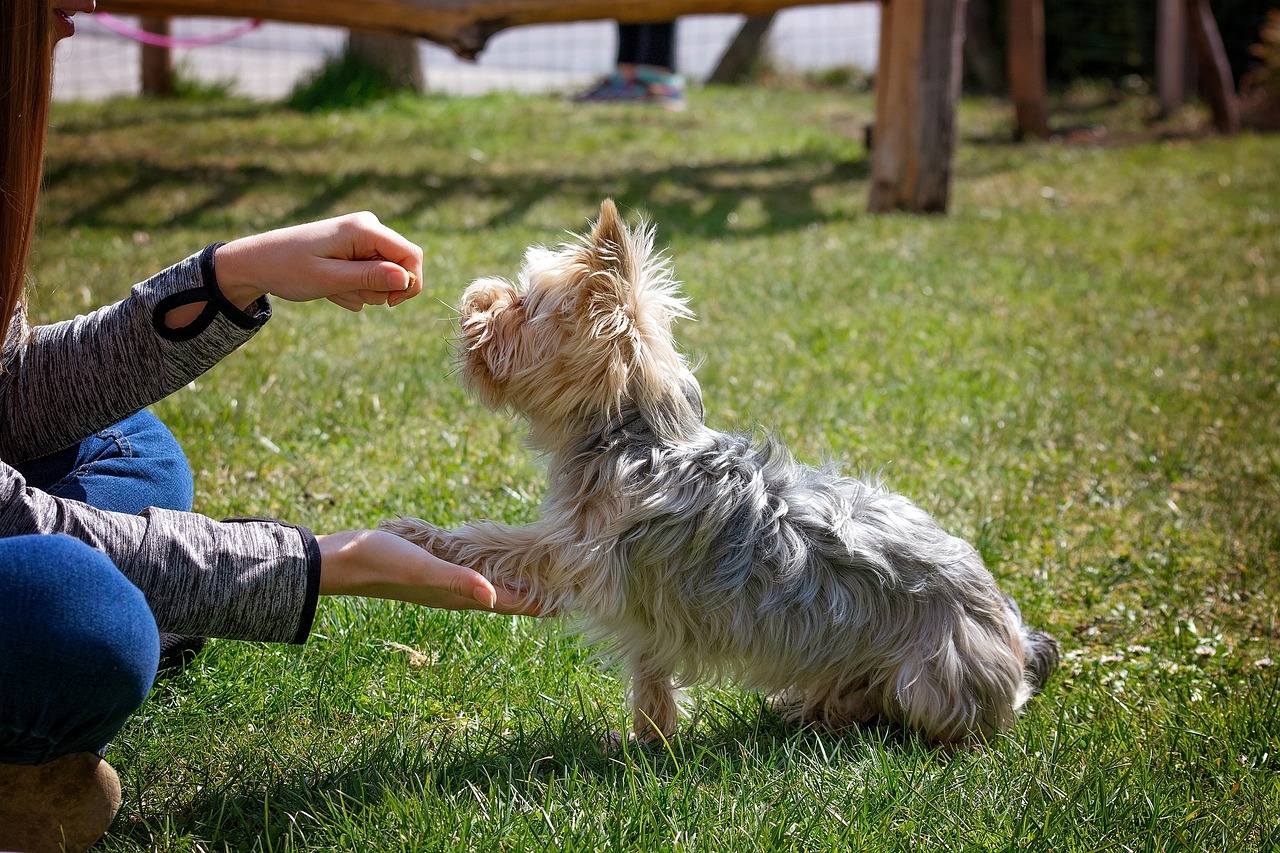
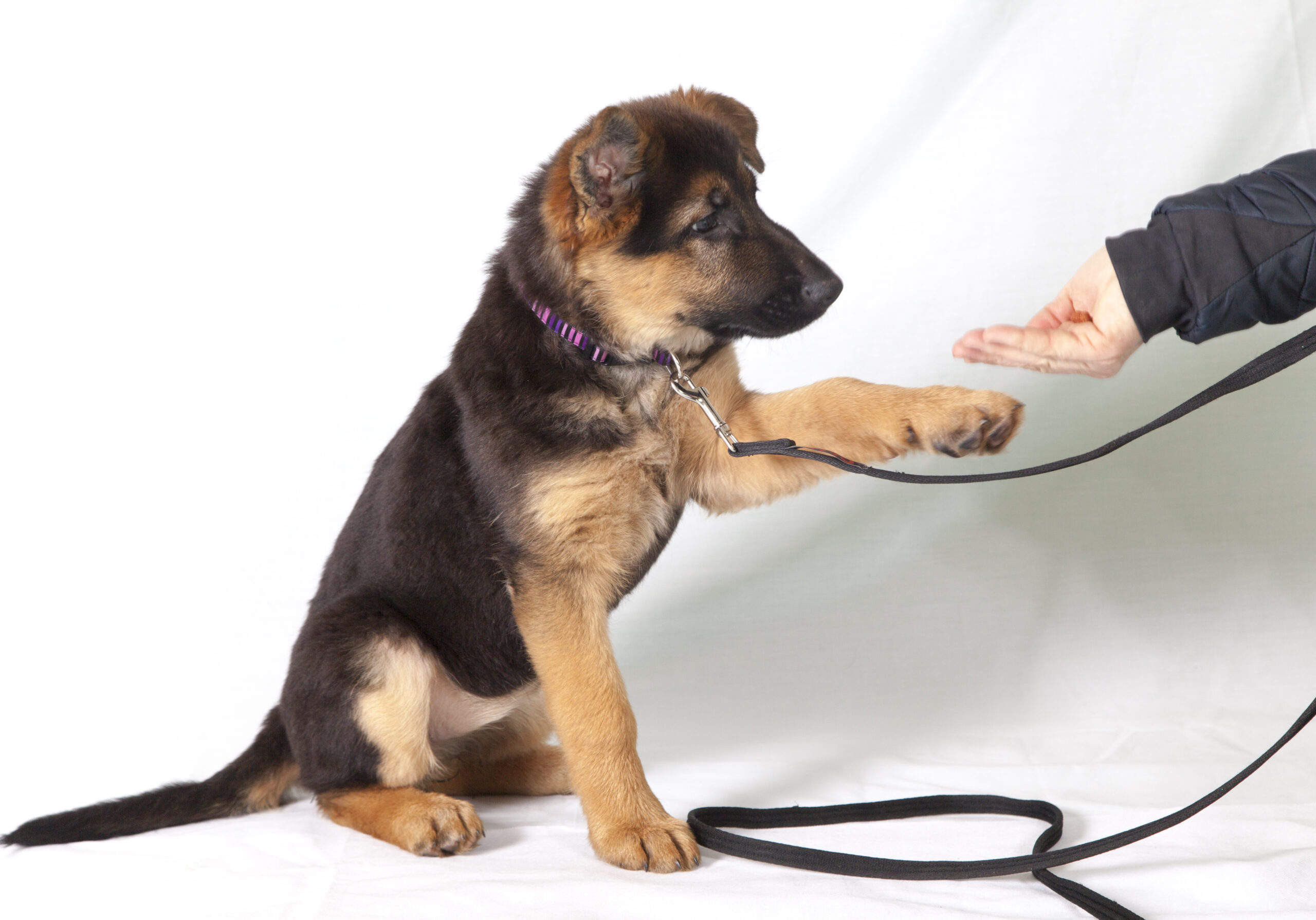
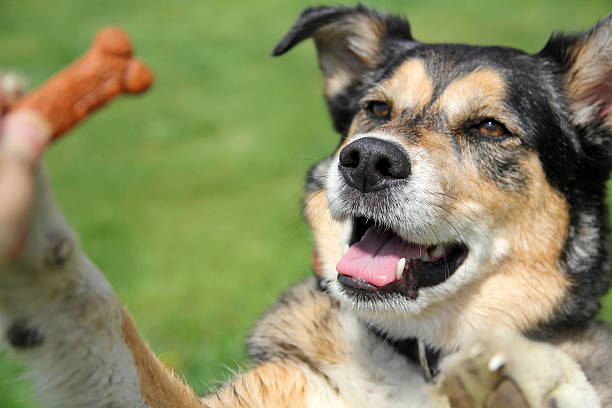
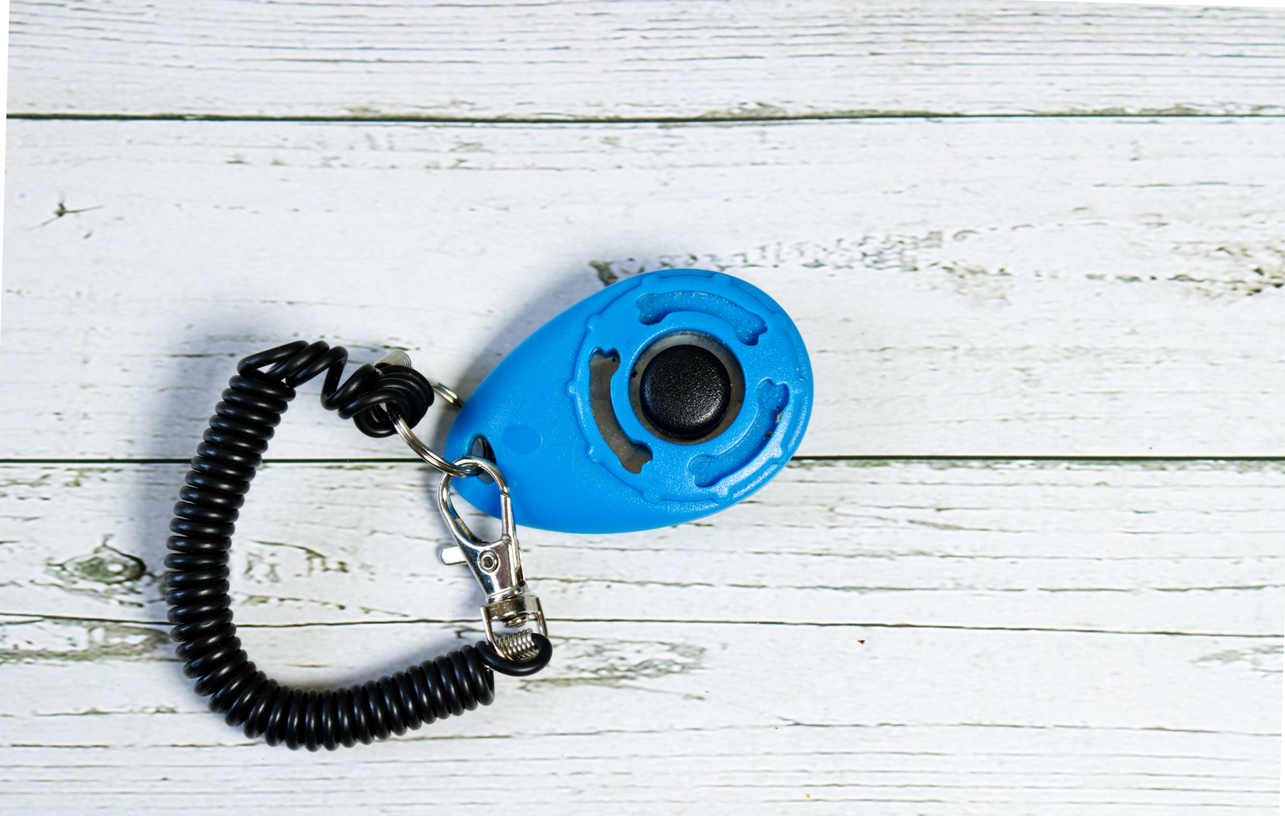
Example: Training your dog to sit using positive reinforcement
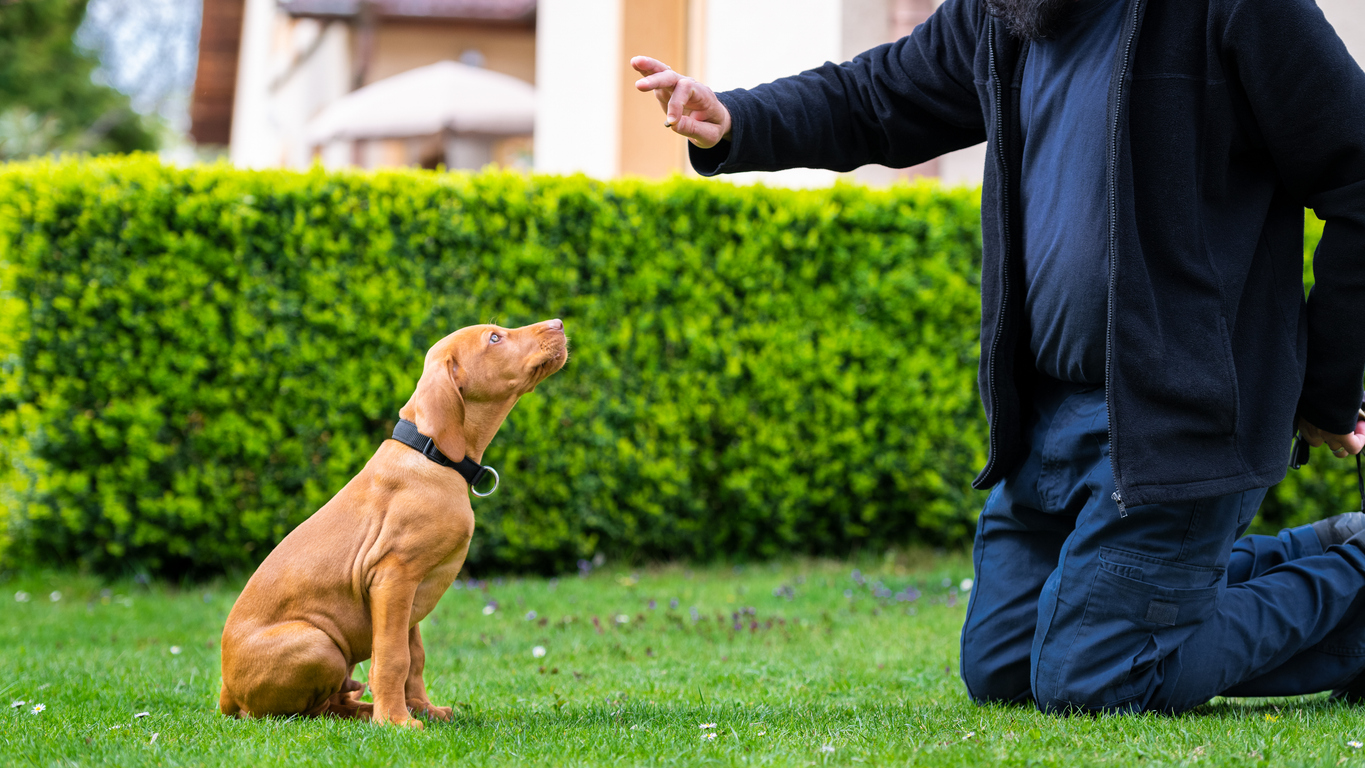
To reinforce a behavior, first the behavior has to happen! You can wait to “capture” your dog’s behavior: when you see them sitting, mark/reward.
You can also train your dog to sit by luring.
- While your dog is standing, hold a treat in front of their nose (about a foot away).
- Slowly move your hand with the treat over your dog’s head and towards their tail. As the dog tracks your hand and the treat, they will move their head back. This encourages them to begin to squat and puts them into a sitting position. When they sit, give your dog praise, and deliver the treat!
- As your dog gets more comfortable with this exercise, you can also use a verbal cue by saying “sit” as they begin to sit. Your dog may respond to either the hand gesture or verbal cue, and using them together is often easiest.
Tip: If the dog tries to jump up to get the treat, hold it closer to the dog’s face.

CAUTION!
-
- Never push down on your dog’s back to force them to sit. This can be uncomfortable or even scary.
- Don’t yell or get angry if your dog doesn’t understand what you want at first. Training takes time and patience.
- If the dog remains uncomfortable or fearful, stop and consult your veterinarian or a behaviorist.
Topic(s): Bare Bones Basics, Behavior, Breeder Resource, Intervention